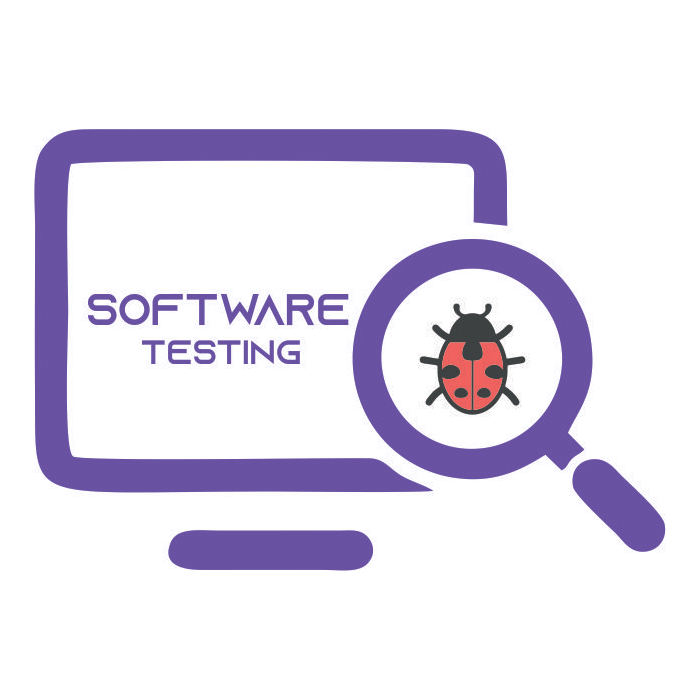Software Testing Training in Nagpur
Master Software Testing: Nagpur's Best Training!
Are you searching for the best Software Testing training in
Nagpur that guarantees not just comprehensive education but
also 100% job placement?
You've found it! We provide excellent Software Testing Classes in Nagpur at our institute,
giving you the know-how and
abilities required to succeed in this industry.
What is Software Testing?
Software testing plays a pivotal role in the software development lifecycle. Its primary objective is to identify defects and ensure the quality of a software product. This crucial process involves executing the software in various scenarios to validate its functionality, performance, security, and user experience.
Manual and Automated Testing
In software testing, there are two primary methods: manual testing and automated testing. Manual testing involves testers interacting with the software as users would, performing various test scenarios, and verifying that it functions as intended. On the other hand, automated testing employs scripts and tools to expedite repetitive tasks, making the testing process more efficient.
Why Software Testing Matters
Rigorous testing is imperative because it enhances the
reliability of a software product, reduces the likelihood of
post-release issues, and contributes significantly to a positive user experience. To create
software that is reliable
and strong, effective testing involves meticulous preparation, meticulous execution, and ongoing
iteration.
At our institute, we offer a comprehensive Software Testing Course that covers all aspects of
manual and automated
testing. Our experienced instructors will guide you through the intricacies of software testing,
helping you gain the
skills necessary to excel in this field.
Why Choose Steps Technology for Software Testing?
Expert Instructors: Our team of seasoned instructors will provide you with hands-on training, ensuring you master the art of software testing.
Job Placement Assistance: We're proud to offer 100% job placement assistance to our students. Our extensive network of industry contacts will help you secure your dream job.
Practical Experience: Our team of seasoned instructors will provide you with hands-on training, ensuring you master the art of software testing.You'll gain practical experience by working on real-world projects, ensuring you're ready for the job market.
Flexible Timings: We understand your schedule, and our flexible timings make it easy for you to attend classes at your convenience.
Don't pass up this chance to launch your software testing career. Secure your seat today , get ready to start a fulfilling career in the tech sector.
Course Curriculum:
- Introduction of Software
- Introduction of Software Testing
- Verification and Validation
- Quality Assurance and Quality Control
- Verification Strategies Review
- Walkthrough
- Inspection
- Kickoff
- Validation Strategies
- White Box Techniques
- Black Box Techniques
- Level of Testing
- Software Development Life Cycle (SDLC)
- Software Testing Life Cycle
- Software Development Models
- Test Design and deliverables
- Defect Life Cycle
- Risk Based Testing
- Regression Testing / Retesting
- Smoke / Sanity Testing
- Web application testing checklist
- Introduction to Automation Testing
- Automation Testing vs Manual Testing
- Advantages and Drawbacks
- Why testing should be automated
- Installation: Eclipse, JDK, JAR Files, Drivers (Chrome, IE, Mozilla, etc.), TestNG, Maven
- History of Selenium
- What is Selenium and Why Selenium
- Selenium components / Tool suite
- Platforms supported by Selenium
- Selenium License
- Java in Selenium
- Setup Java environments
- Java programming concepts
- Access and Non-access modifiers
- Class, Objects, Variables
- Method
- Conditions and Loops
- String and Array
- Inheritance
- Exceptions
- Java program assignment and practice
- Selenium Webdriver Introduction
- Webdriver vs RC
- Download and configure Webdriver with Eclipse
- Simple Test Case
- Open and Close Browser
- UI elements
- Prerequisites to create Test Cases in Selenium WebDriver
- Element Locators
- How to inspect elements
- Id
- Name
- Link text
- Class
- Xpath
- CSS
- Browser
- Editbox
- Text Area
- Error message
- Popup window
- Button
- Checkbox
- Link
- Radio button
- Image
- Image Button
- Image Link
- Dropdown
- Web Table / HTML Table
- What is TDD
- How to implement TDD
- Introduction of TestNG with eclipse
- TestNG Test Case
- TestNG Annotations and Data providers
- Creating Test Cases with TestNG
- XML File Structure, How to create an XML file in eclipse
- Test Suite using XML file
- Introduciton of Testing framework
- Types of Framework and its Purpose
- Tools for developing
- Reading data from external file
- Data flow and web application
- Application using TestNG
- What is Maven
- Advantages of Maven
- How to integrate Maven with web
- Applications of Maven
- What is POM
- Advantage
- When and how to implement
- Implementation of POM
- What is Database testing
- Types
- Operation in Database Testing
- Manual/Automation Database testing
- Steps for Database Testing
- Implementation of Database Testing
- What is Log4j
- Works with Selenium
- How to implement Log4j
- What is Extent Report
- Work with Selenium
- Implement in Java project
- What is BDD
- How BDD works
- Tools for BDD
- Integration between Selenium and Cucumber
- What is Gherkin
- Implementation of Selenium and Cucumber Framework

